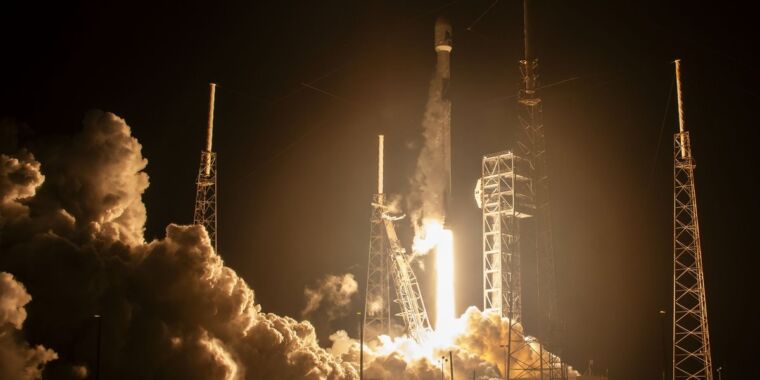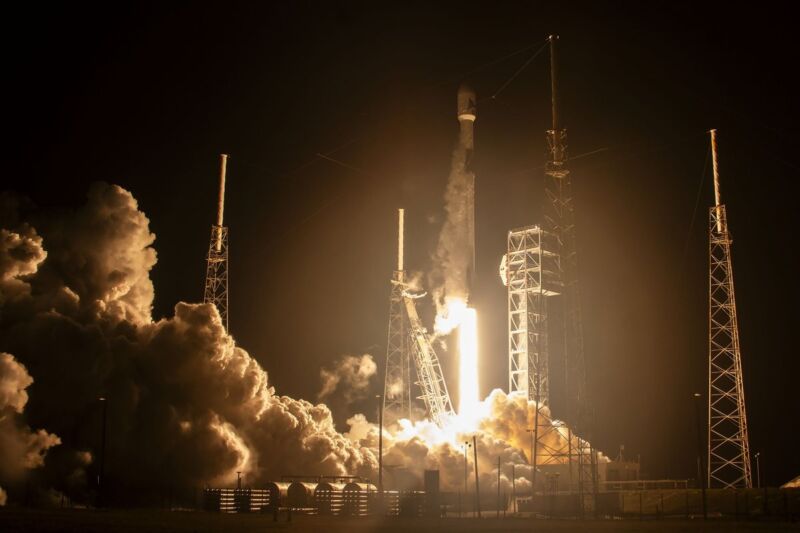Rocket Report: US military still wants point-to-point; India’s big 2024 ambitions


Enlarge / A Falcon 9 rocket launched NASA’s PACE spacecraft this week.
SpaceX
Welcome to Edition 6.30 of the Rocket Report! Looking ahead, there are some interesting launches coming up in the middle of this month. Here are some we have our eyes on: Intuitive Machines’ lunar lander on a Falcon 9 and a re-flight of Japan’s big H3 rocket next week; then there’s an Electron launch of an intriguing Astroscale mission and NASA’s Crew-8 the following week. Good luck to all.
As always, we welcome reader submissions, and if you don’t want to miss an issue, please subscribe using the box below (the form will not appear on AMP-enabled versions of the site). Each report will include information on small-, medium-, and heavy-lift rockets as well as a quick look ahead at the next three launches on the calendar.

Was Transporter created to ‘kill’ small launch? SpaceX’s Transporter missions, which regularly fly 100 or more small satellites into low-Earth orbit on Falcon 9 rideshare missions, have unquestionably harmed small satellite launch companies. While companies like Rocket Lab or Virgin Orbit could offer smallsat operators a precise orbit, there was no way to compete on price. “The Transporter program was created a few years ago with, in my opinion, the sole purpose of trying to kill new entrants like us,” said Sandy Tirtey, director of global commercial launch services at Rocket Lab, during a panel at the SmallSat Symposium on Wednesday.
Low-price guarantee … The panel was covered by Space News, and the rest of the article includes a lot of comments from small launch providers about how they provide value with dedicated services and so forth—pretty typical fare. However, the story does not really explore Tirtley’s statement. So, was Transporter created to kill small launch companies? As someone who has reported a lot on SpaceX over the years, I’ll offer my two cents. I don’t think the program was created with this intent; rather, it filled a market need (only Electron and India’s PSLV were meeting commercial smallsat demand in any volume at the time). It also gave Falcon 9 more commercial missions. However, I do believe it was ultimately priced with the intent of cutting small launch off at the knees.
FAA investigating Virgin Galactic’s dropped pin. Virgin Galactic reported an anomaly on its most recent flight, Galactic 06, which took place two weeks ago from a spaceport in New Mexico. The company said it discovered a dropped pin during a post-flight review of the mission, which carried two pilots and four passengers to an altitude of 55.1 miles (88.7 km). This alignment pin, according to Virgin Galactic, helps ensure the VSS Unity spaceship is aligned to its carrier aircraft when mating the vehicles, Ars reports.
Corrective actions to be required … Virgin Galactic said it reported the anomaly to the Federal Aviation Administration (FAA) on January 31. On Tuesday, the FAA confirmed that there was no public property or injuries that resulted from the mishap. “The FAA is overseeing the Virgin Galactic-led mishap investigation to ensure the company complies with its FAA-approved mishap investigation plan and other regulatory requirements,” the federal agency said in a statement. Before VSS Unity can return to flight, the FAA must approve Virgin Galactic’s final report, including corrective actions to prevent a similar problem in the future. (submitted by Ken the Bin)
The easiest way to keep up with Eric Berger’s space reporting is to sign up for his newsletter, we’ll collect his stories in your inbox.
HyImpulse ships suborbital rocket to launch site. German launch startup HyImpulse has confirmed that its SR75 rocket and all related support systems have been boxed up and have embarked on the long journey to Australia, European Spaceflight reports. SR75 is a single-stage suborbital launch vehicle that is designed to be capable of delivering up to 250 kilograms to a maximum altitude of around 200 kilometers.
Testing a pathfinder … The debut flight of SR75 had initially been slated to occur from SaxaVord in the United Kingdom. In fact, HyImpulse had received approval for the flight from the UK Civil Aviation Authority in mid-2023. However, with financial issues forcing work on the site to be temporarily slowed, HyImpulse was forced to look elsewhere. The launch will now take place from the South Launch Koonibba Test Range in Australia, possibly as soon as March. The test will certify several critical elements of the company’s larger orbital SL1 rocket. (submitted by Ken the Bin)


